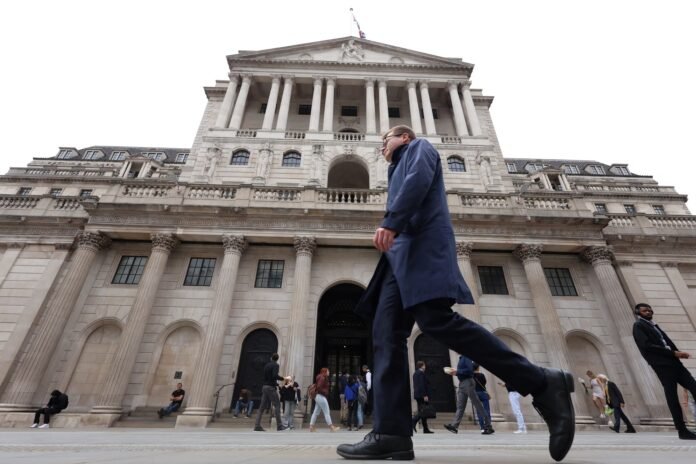British consumer lending grew at its weakest pace since mid-2022 in November, with fewer mortgages approved than expected, according to data released by the Bank of England (BoE) on Friday. This slowdown in consumer credit and mortgage approvals aligns with broader indications of a slowing UK economy, with the latest figures casting doubt on the government’s growth expectations.
Consumer Credit Growth Slows
The annual growth rate of consumer credit cooled in November, dropping to 6.6% from 7.3% the previous month. This marks the slowest pace of expansion since June 2022, when the economy was grappling with the aftermath of the COVID-19 pandemic and the subsequent economic disruptions. The November data highlights the caution among British households, as many continue to tighten their belts amid rising inflation, higher interest rates, and economic uncertainty.
The BoE’s findings point to a clear deceleration in the consumer credit market, which had been a significant driver of economic activity in the post-pandemic recovery period. The slowdown in consumer borrowing signals a change in sentiment, with households more hesitant to take on debt amid the mounting cost of living and economic turbulence.
Stagnation in the Economy
These figures come at a time when Britain’s economy is showing clear signs of stagnation. The UK’s GDP growth was flat in the three months to September, and the BoE estimated last month that the economy continued to flatline in the fourth quarter. This disappointing trend presents a challenge for the new Labour government, which had promised to boost growth with its budget announced on October 30.
Elias Hilmer, an economist from consultancy Capital Economics, noted that “November’s money and lending data suggests that households’ caution with their borrowing and saving ahead of the Budget hasn’t gone away. This adds further downside risk to our forecast for GDP to stagnate in Q4.” In short, the subdued consumer credit data is reflective of broader economic caution, with households looking to limit their exposure to additional financial risks as uncertainty looms over the UK’s economic future.
The Government’s Response
In an effort to stimulate the economy, Finance Minister Rachel Reeves had unveiled a series of measures in the Labour government’s budget, including substantial tax increases on businesses and a rise in government borrowing to help fund additional public spending and investment. However, since the budget was unveiled, business surveys have shown signs of deterioration, raising concerns about the efficacy of these measures in boosting economic growth in the near term.
Some economists remain hopeful that higher public spending could provide a temporary boost to the UK economy in 2025, but the outlook remains clouded. Factors such as the potential for global trade frictions, particularly with the policies of incoming U.S. President Donald Trump, and a weakening economy in the eurozone are contributing to uncertainty.
The Housing Market: A Potential Indicator of Weaker Growth
While the UK housing market has thus far been relatively insulated from the broader slowdown, the latest Bank of England data offers an early indication of a weakening property market. Mortgage approvals fell to 65,720 in November, down from 68,129 in October. This represents the lowest level of approvals since August and comes in below the consensus forecast of around 68,500 approvals, according to a Reuters poll of economists.
While house prices had continued to rise in recent months, with lenders like Nationwide Building Society reporting price increases, the drop in mortgage approvals suggests a potential cooling of the housing market in 2025. This could signal a broader slowdown in consumer spending, as the property market has traditionally been a key driver of household wealth and borrowing.
Consumer Credit Shows Smaller Increase
In addition to the slowdown in mortgage approvals, consumer credit growth also saw a marked decline in November. The net increase in consumer credit stood at £878 million, down from £995 million in October. This represents the smallest rise since June 2022 and was below the Reuters poll consensus of a £1.2 billion increase.
This cooling in consumer credit suggests that households are becoming more cautious about their borrowing behaviour, possibly due to the ongoing cost-of-living crisis and rising interest rates. With inflation remaining elevated and borrowing costs climbing, many consumers appear to be limiting their spending and credit uptake, which could have further implications for the UK’s economic recovery.
Implications for 2025
Looking ahead to 2025, the slowing pace of consumer credit and mortgage approvals, combined with the broader stagnation in economic activity, suggest a more challenging environment for the UK economy. While the government’s budget promises significant public spending, the broader outlook remains uncertain, with global and domestic factors contributing to a cautious economic climate.
The housing market, in particular, is expected to face challenges in 2025, as rising borrowing costs and a more conservative lending environment may dampen demand for property. As the Bank of England continues to grapple with inflation and the impact of higher interest rates, the outlook for both consumer credit and the wider economy remains uncertain.
For the government, the challenge will be to balance fiscal responsibility with the need to stimulate growth. While the current economic data may suggest a temporary slowdown, policymakers will be keenly focused on ensuring that the UK economy can recover in the longer term.
In summary, the latest data from the Bank of England points to a weakening of British consumer lending, with both credit growth and mortgage approvals slowing. This trend is in line with broader signs of economic stagnation, posing a challenge for the newly elected Labour government. While public spending increases are expected to provide a temporary boost, the outlook for 2025 remains uncertain, with factors such as global trade tensions and a cooling housing market adding to the risks.
As the UK navigates this period of economic uncertainty, both policymakers and consumers will need to remain cautious in their decisions, carefully balancing the need for growth with the risks associated with rising debt and inflation.


